Deloraine Primary School 5/6W
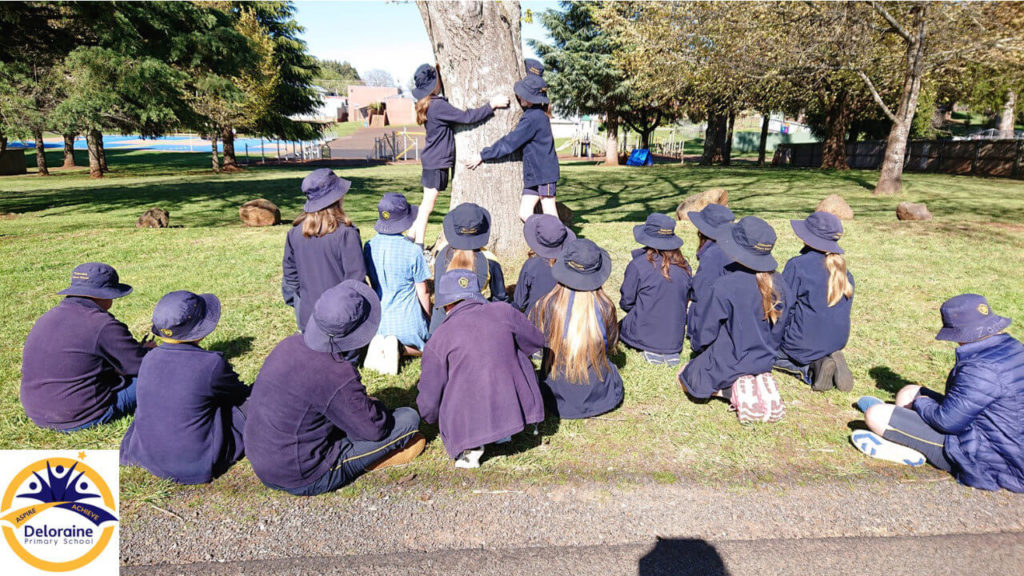
Our Questions
There have been quite a few questions asking which countries and which places in the world are most affected by climate change, and about which countries are getting hotter, quicker.
As you know, the effects of climate change are different everywhere. Overall, we are seeing the planet heating, but this has different impacts in different places.
Did you know that climate change is also affecting where rain falls? How windy it is? When and where cyclones occur? There is nowhere on Earth that climate change isn’t having an impact, but the ways that climate change affects different countries depends on lots of different factors, including their geographical location, their exposure to different types of change, the sensitivity of the environment to change, and the capacity of their human population to adapt.
Understanding which is the most affected country depends on the risk criteria you are looking at.
If you wanted to know where the highest number of people are affected by climate change right now, you might think of countries affected by more intense extreme weather events, like Pakistan, Haiti, and the Philippines.
Also greatly impacted are countries with large cities in south-east Asia like Indonesia, and Bangladesh, which are losing coastal land with sea level rise, or countries in Africa affected by drought, like Kenya. If you wanted to know which countries are being faced with becoming unliveable or being lost altogether, you might think of countries in the Middle East reaching 50°C more often, or low-lying islands like Tuvalu, the Torres Strait Islands, and the Maldives.
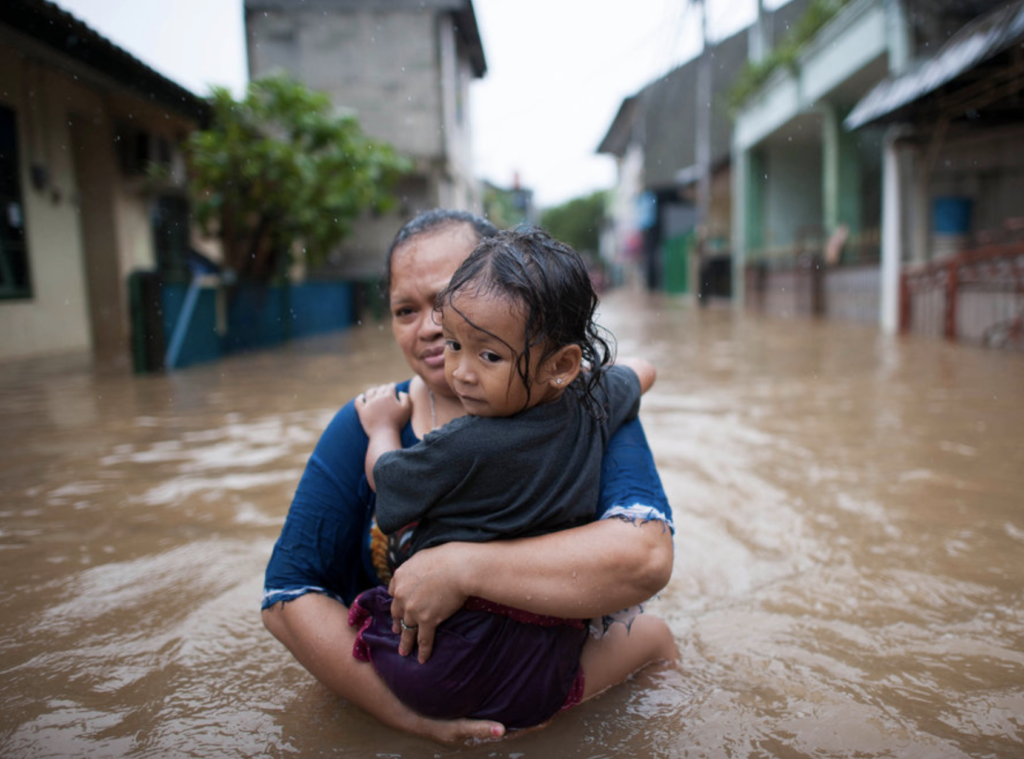
In Bangladesh, salt water flooding over land has made farming impossible in many areas and finding fresh drinking water challenging.
In other parts of the world, the effects of climate change will be most felt by millions of people in terms of access to water. Many countries rely on water from glacier and snow melt both for drinking water and for agriculture. Countries like the Andean nations especially Peru, Chile, Bolivia, and countries in Southeast Asia that rely on glacier meltwater from the Himalayas could be strongly affected, as glacier ice is now melting faster than ever and less snow is tending to fall in some places – meaning there will be less water available in the long term.
Of course, parts of the planet that are already hot will become much more difficult to live in as it becomes hotter. Tropical areas around the Equator are most at risk here. Tropical areas could be pushed towards the limits of what humans can survive if temperatures rise more than 1.5°C above preindustrial levels. Humans can tolerate dry heat better than they can humid heat. Humans are unable to tolerate what is called a “wet bulb temperature” (that’s a measure of heat and humidity together) of over 35°C for very long. In these conditions, the human body is not able to cool itself down by sweating and such conditions can be fatal. Such conditions may have dire consequences for many animals as well. With temperatures increasing everywhere, this could have very serious consequences as about 40% of the world’s population currently lives in tropical areas. This effect of climate change alone could cause a huge refugee crisis with potentially millions of people displaced by climate change by 2050.
Just in terms of temperature rise, perhaps surprisingly, some of the coldest areas have warmed the most due to climate change. Though the global average temperature rise is currently at 1.1°C above preindustrial levels (and Australia’s average temperate is currently 1.44°C higher than when records began) the Arctic is heating up much more dramatically. Between 1971 and 2019, the Arctic’s average annual temperature rose by 3.1°C, meaning it’s heating almost three times faster than the rest of the planet – with drastic consequences on Arctic ecosystems and Indigenous peoples who call the Arctic home. The following video can help us to visualise which parts of the world have heated up most over the past 140 years, and therefore helps us understand which areas are currently most affected by climate change
While some countries might be worse off than others, and some countries might have more capacity to do something to limit the impacts, climate change is affecting ALL OF US and we all have a responsibility to make a positive difference.
Climate change is affecting all of our lives in many different ways.
If you live in Tasmania, you will see it in our landscape. Sea levels are rising, which means we are losing some wetlands and beaches. This can also affect our communities. In the next few years, low-lying houses and roads are likely to go underwater. We're also getting more very hot weather days, that mean frequent and severe bushfires, which threaten some people's homes, and can destroy forests and wildlife. Because of climate change, some places, like alpine and peat bog areas that have never burned before, are starting to dry out and burn in bushfires. This means that we could lose some rare Tasmanian plant and animal species.
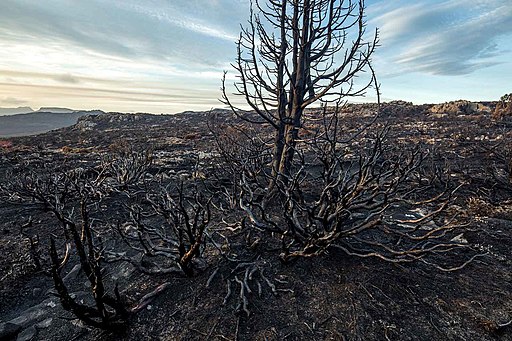
If you like to fish, you might find that there are different kinds of fish coming into the seas around Tasmania for you to catch - but if you like to dive or snorkel you may not see Tasmania's giant kelp forests for much longer.
By the time you are old enough to learn to drive, you are likely to drive an electric car - we need to make sure that all our transport is powered from renewable energy. And when you get a job, there will be lots of jobs that are there because of climate change - jobs in renewable energy production, jobs in climate science and climate response, new types of fisheries and agriculture and that are there because of climate change, and many more.
We will all need to be a part of adapting to climate change - and there are many opportunities to choose how you can be part of the change we need. Have a look at the What can I do? page for some more ideas.
Our world would be very different without the Industrial Revolution. It has been so impactful that historians refer to the time before it as the Early Modern Era and the time since the 18th Century as the Modern Era. Make no mistake, these eras are very different. Before the Industrial Revolution most people lived in the countryside. Because of the Industrial Revolution jobs, resources, money, and people became centralised in cities, which had been much smaller beforehand. Much of what we take for granted is partly because of the Industrial Revolution. Modern governments, police forces, property and renting, education systems, jobs types and more would look very different if it had not happened. In other words, our social systems have been strongly influenced by the fossil fuel economies built because of the Industrial Revolution.

This is also the case for modern technology and life in general. Cars, planes, modern medicine, electricity, indoor plumbing, shopping malls and supermarkets, we take all these things for granted. This is what makes action on climate change so difficult. The Industrial Revolution has created our modern lives as well as climate change. We can acknowledge how the Industrial Revolution has made our lives better. But we should also acknowledge how it has caused air and water pollution, more diseases, C02 and other greenhouse gas emissions, bad working conditions for many, and more advanced weapons and dangerous conflicts. It also has not unfolded equally or fairly for everyone.
But we do not need to choose between a carbon-heavy industrialised and non-industrialised life. We can change our societies and economies, just like they were changed to make the Industrial Revolution, and we can focus on what we want to do differently. By decarbonising our economies we will no longer rely on fuel and energy that cause climate change. Pollution that runs into the soil and water can be filtered. The amount of damage we do to the environment can be drastically reduced, and if we change not just our economies but also our societies, we can even work to regenerating the environment as well. It will just take us a lot of work - a real transformation of our current society - to get there.
Great question! It’s an extremely difficult question to answer, but I will do my best! There are more than nine million species of animal on Earth, and many more that we are yet to discover! However, I think all species will be affected by climate change – for some, the effects will be beneficial… But I suspect that most of the species we cherish will be negatively affected. I know one study looked at 538 plant and animal species around the globe. The study found that between 57 – 70% of these species may face extinction because of anthropogenic climate change (unnatural levels of change attributed to human activity). In fact, the first mammal to go extinct due to climate change has already been recorded – and it was an Australian species: The Bramble Cay Melomy.
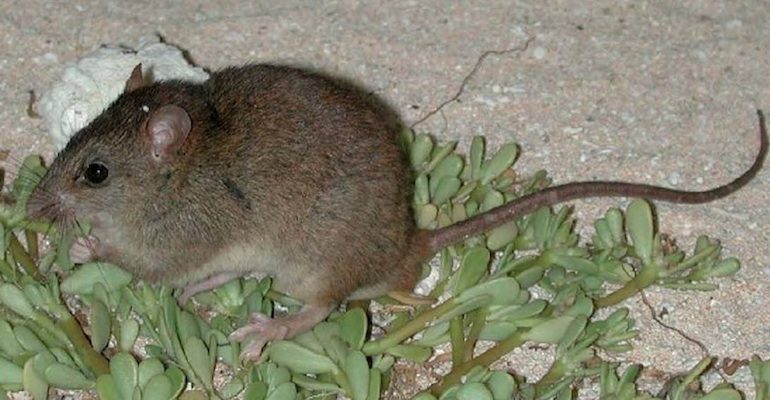
In Australia, we are also witnessing the drastic effects of chytrid (pronounced ‘kit-rid') fungus. This fungus can occupy areas above a certain temperature, and as the climate warms, it increases its range. Unfortunately, it is deadly to frogs and other amphibians – coating their skin and making it difficult for them to breathe. It can also affect their nervous system and change their behaviour. Chytrid fungus has caused the decline of more than 40 Australian frog species. Of these, seven are now extinct.
As a marine scientist, I am most familiar with the issues faced by animals living in the ocean. One consequence of increased carbon emissions is the acidification of our oceans. When carbon dioxide combines with seawater, chemical reactions occur that produce carbonic acid. This is bad news for creatures that have shells (sea-snails, urchins, oysters, etc.), as the materials they use to form their shell have been degraded by acid. This means they have less protection from environmental conditions and usually means they cannot survive. If small animals like urchins do not survive, then animals that feed on urchins (like sea-otters) have no food and begin to starve.
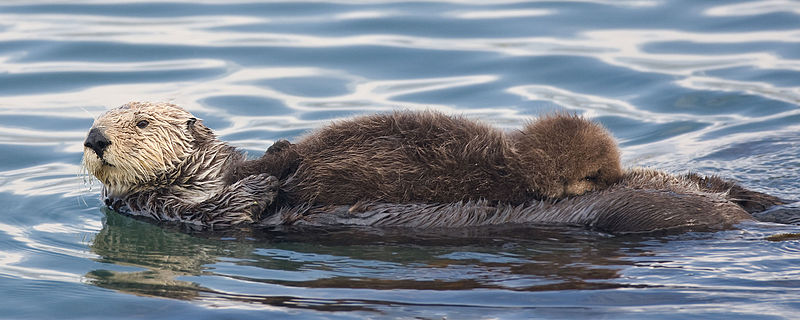
Another marine-related consequence of climate change is to do with the rise in global average temperature. Some species, such as sea-turtles and crocodiles, require specific nest temperatures for the breeding season. This is because the temperature of the nest determines how many males and how many females will hatch from their eggs! For example, Green Sea-Turtles generally hatch as males if the nest temperature remains below 29 degrees Celsius, and hatch as females if the nest temperature is above 31 degrees Celsius. Temperatures between 29 and 31 tend to produce a mix of male and female hatchlings. As the temperature rises, we are seeing fewer males hatch, which means there will be fewer breeding opportunities and fewer babies hatching in the future. However, it is also worth noting if a nest gets too hot (above 36 degrees Celsius), then the turtles won’t hatch, and the nest fails. This would be dire for sea-turtle species.
Before finishing this answer, I want to emphasise that there are solutions to the climate crisis, and people around the world are working towards them. We can, and we will, avoid the worst of climate change. Whilst inevitable, the outcomes do not need to be the same as our current projections. Renewable energy solutions are becoming cheaper every day, and though Australia might seem a laggard on climate action, the international sector is collaborating and moving quickly towards a reduction in global emissions. Chile is rapidly phasing out coal power, and along with South Africa, Chile invests the most in renewable energy relative to their GDP. China is the world’s largest producer of wind energy and is working hard to meet its energy demands. The United States of America is seeking to reduce its own emissions by 50% by 2030. The world is listening to the science, and though it can feel slow at times, the wheels of progress are turning.
Great question.
Yes, it will.
Records from the bottom of lakes or boggy places tell us that as past climate changed over thousands of years, the vegetation changed. Some places went from being grassland in colder periods to forests in warmer periods. In some cases, the type of forest changed. In Tasmania we can see changes from rainforest to eucalypt forest and vice versa at different times.
Thinking about how some climate changes in the past left footprints helps a bit. About 4,200 years ago there was a change in climate that resulted in many human populations dying out or moving elsewhere. Many others also changed the types of crops they planted or how they farmed animals, and what animals they farmed where. People who study these kinds of events have also found a lot of abandoned villages and towns. About 8-900 years ago in southwestern USA, drought caused some settlements to be abandoned, too. The most famous of these is Mesa Verde and the deserted city still exists.
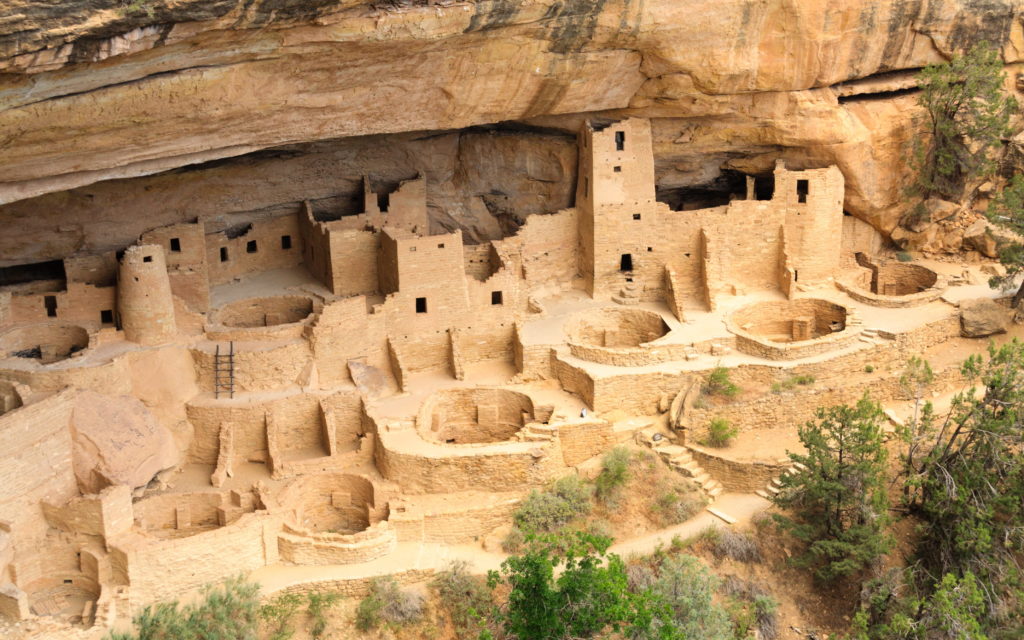
Right now, there are a lot of plants and animals that are finding it very hard to adapt to climate change because it’s happening so fast. It’s likely that at least some of these will die out (become extinct). Think about how Pencil pines on the Central Plateau behind Deloraine are doing. Quite a few have died from drought and many more died in fires in 1961 and more recently in 2016. As climate continues to change, we can expect more big hot fires that will kill these trees. Climate models also suggest that the west coast of Tasmania is likely to become drier. This will affect the Huon pine because it doesn’t like being dry. It likes having wet feet. These trees that can live for hundreds to thousands of years could disappear from Tasmania, and Tasmania is the only place they’re currently found.
As temperatures increase, we can also expect to get some of the pests that exist on the mainland. They haven’t been able to do well here before because it’s been too cold, but as it warms up, they will be much happier here. They might squeeze out (or maybe even feed on) other native species which will then have impacts on Tasmanian ecosystems for hundreds of years. If you were able to see what Tasmania looks like in 500 years, it will be very different to what it looks like now. Quite a few plant and animal species are likely to not exist while there may be species we don’t see here today.
So, climate change always leaves a footprint. We can find clues about this footprint in the environment.
That’s a big question! I’ll concentrate on air pollution, as this is linked to climate change. Air pollution is made up of lots of chemicals, some of which are harmful to us. The amount of these chemicals in the air (called the concentration) is the most important thing, as we are more concerned when there are higher levels of the chemicals that make us sick. The ones that are most common and harmful to people are particulate matter, ozone, nitrogen dioxide, sulphur dioxide and carbon monoxide. These chemicals come from many places, including cars, factories, bushfires and even wood heaters.
In Tasmania, we have some of the cleanest air in the world, because we don’t have huge cities with lots of cars and factories. Lucky us! But we still get air pollution in the form of smoke from wood heaters and from bushfires. Although smoke is made up of many chemicals, the main we know about and can make you sick, is called particulate matter. These are very tiny particles, only about 3% of the diameter of a human hair. When there are many of these particles in the air, you can smell smoke and the air will be hazy. These particles often irritate your eyes and nose and you might get a headache. Some people can become very sick if they breathe in these particles, especially people with asthma. The more of these types of particles you breathe, the more chances you have of getting sick.
You would have heard about carbon dioxide as one of the main chemicals that contribute to climate change. Some people say that carbon dioxide isn’t really an air pollutant, as we need a certain level to maintain life on earth (in fact, our bodies make carbon dioxide as part of our normal function, so we always have some in our system). But too much carbon dioxide in the atmosphere is really the problem with climate change, as it keeps the earth too warm. So you could call it a pollutant in large concentrations. This is why it’s important to keep track of this chemical in the atmosphere.
This is a great question as it highlights the important role of thinking about our food choices in responding to climate change. But if everyone in the world was vegan, that wouldn’t necessarily be the best way to help slow climate change because we would need a very large land area to grow enough crops. Cutting down trees to clear land for crops is not helpful for climate change because we need trees to help take carbon out of the air.
So instead of everyone in the world being vegan it would be better if everyone in the world reduced how much beef and lamb they ate to maybe once or twice a week or even less and for the rest of the time ate more chicken, fish or vegetarian meals. It is healthier for us to eat less red meat anyway and in Australia we already eat far more red meat than dieticians recommend. That is because we farm a lot of cattle here and our access to high quality and affordable meat is good.
Being vegan can be a much more environmentally sustainable way of eating if you are eating local (or home grown) produce, but it can have health implications for some people, especially children, so it is important to make the decision considering health as well. So the answer is yes, being vegan can really help to reduce emissions but the key part is being aware of what you are eating.

There are also other options to eat more sustainably. Eating food that you grow yourself is great. Do you have chickens at home? As well as eating more locally produced food, including meat. Trying to reduce waste from the food that you eat is also helpful. Eating kangaroo and wallaby is another great option for red meat! Have you tried wallaby? It is great on the BBQ or in a curry. So it is helpful for climate change and our health to reduce the amount of meat we eat, particularly red meat, but meat is still ok in small amounts. Thinking about what we are eating, how it was produced and where it is coming from and making choices that have less emissions is a really great way to help combat climate change.













